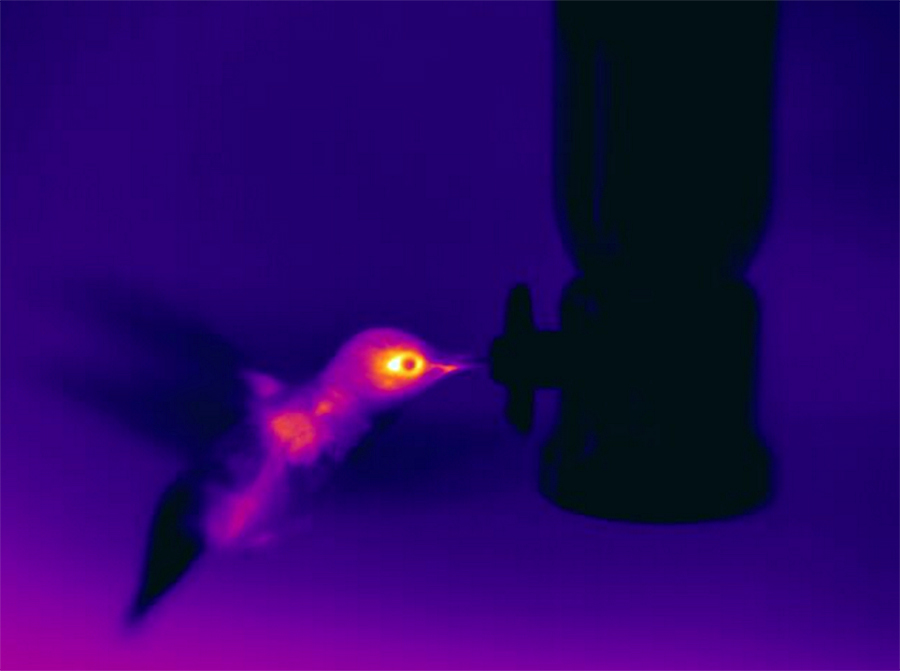A Brock University biologist is part of an American team studying whether or not the body temperature and metabolism of female hummingbirds drop during nesting.
Professor of Biological Sciences Glenn Tattersall is contributing his expertise in thermal imaging to the research project “A Mother’s Work is Never Done: Using Thermal Imaging to Detect Torpor in Nesting Hummingbirds” based at Loyola Marymount University in Los Angeles.
The team, headed by Erich Eberts, Research Fellow at Loyola, will look at what happens to ‘torpor’ when a female hummingbird is laying her eggs. Torpor is a hibernation-type state in which an animal’s body temperature decreases and metabolism and other physiological functions slow down.
Hummingbirds use a tremendous amount of energy during the day because they are so small and have a fast metabolism, explains Tattersall.
“Typically at night, especially in cooler weather, hummingbirds shut their body temperature and metabolic machinery down to conserve energy; they go into torpor,” says Tattersall.
“But if a female is incubating her eggs, that’s not conducive to keeping eggs warm if she has to turn her own metabolism off,” says Tattersall.
The research will shed more light on the hummingbird’s reproductive biology.
“Saving energy because they might not last the night at high rates of metabolism has been the standard explanation for why hummingbirds exhibit torpor, but the needs of the developing young may be more important,” he says.
“Demonstrating that torpor is not used extensively in incubation will help answer these questions.”
To determine if female hummingbirds go — or don’t go — into torpor at night, Tattersall advised the group to purchase cameras that capture and stream temperature data as they take photos of the hummingbirds.
These cameras would be mounted on branches or sticks near hummingbird nests, which would broadcast the images through WiFi to a receiver.
Tattersall will help the research team sift through massive amounts of data that measures the birds’ basic temperature ranges through computer code he wrote.
To raise $4,900 for the cameras and accessories, the research team joined a crowd-sourcing campaign. As of Nov. 30, two days before the campaign deadline, the research team had collected $5,000 in donations, 102 per cent above their goal.
“This is a first for me, to be assisting in a crowd-sourcing approach to research,” says Tattersall, adding that the research group won “the most number of backers” prize in the campaign, which raised money for a number of bird research projects.
Tattersall is an expert on the use of infrared thermography, a technique used to measure long-wave infrared radiation emanating from all objects and converting that radiation into temperature.
He and his research team used thermal imagery to show that the tegu lizard can temporarily produce and retain its own body heat, increasing our understanding of so-called “cold-blooded” animals.
The tegu lizard image was a finalist in a 2016 Canada-wide photo competition sponsored by the Canadian government’s Natural Sciences and Engineering Research Council (NSERC).
In his paper “Infrared thermography: A non-invasive window into thermal physiology” published last month, Tattersall provides background and guidelines for the use of thermal imaging, primarily aimed at field physiologists and biologists interested in thermal biology.










